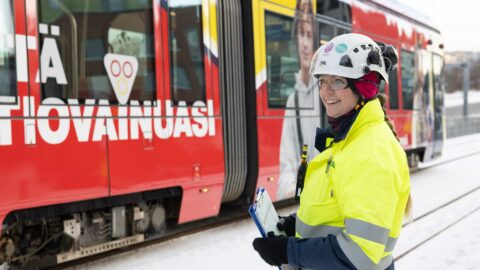
Tampere Tramway
To meet the needs of the growing city and urban area, a modern tramway system has been designed for Tampere. The key goals of the tramway system include making the everyday life and transportation easier in the municipality, supporting the growth and development of the urban area, and increasing the appeal of the city.
The construction work of the Tramway Alliance has been completed, and tram traffic to Lentävänniemi began on Tuesday, January 7, 2025.
With the completion of the work and the start of operations, the Tramway Alliance project has come to an end. Thank you for being part of our journey in building Tampere into a Tram City. On our website, you can still revisit the construction phases and highlights during early 2025.
You can follow the continuation of the tram story on Tampere Tram’s channels, and updates about tram traffic are provided by Nysse. Information about the construction of the Pirkkala–Linnainmaa tramway can be found on the project’s website.
Enjoy your journeys – see you on the tram!
Current issues

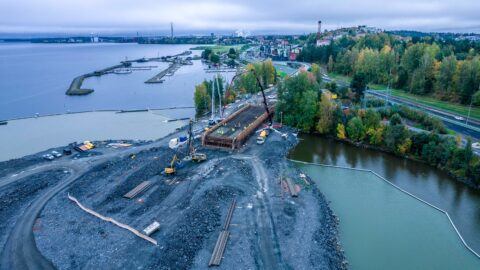
Tramway construction from Santalahti to Lentävänniemi is heading towards completion – new bridges are being built and loading berm dismantled in Näsisaari
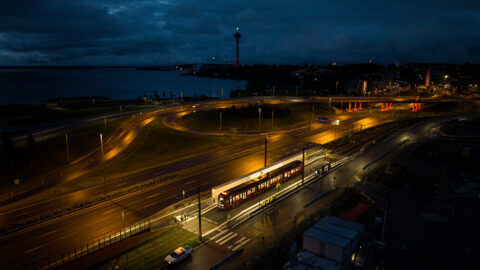
Tampere Tramway traffic to Santalahti begins on Monday 7 August – more than 23 million journeys have been made during a two-year period
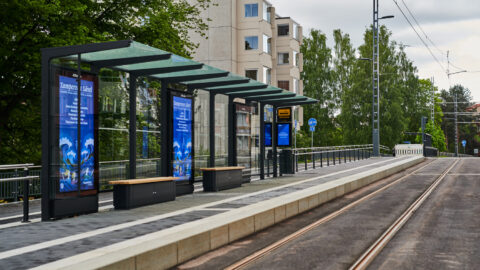
Tampere tramway’s Pyynikintori–Santalahti section and all its street sections are ready – test drives will be conducted before the start of traffic
Tampere tramway will be built in two parts
The construction of the tramway has been divided into two sections. Section 1 covers the construction of the eastbound two-branch line from Pyynikintori to Hervantajärvi and from Tampere University Hospital to Hatanpää route as well as the depot area in Hervanta. Section 2 covers the line westbound from Pyynikintori to Lentävänniemi via Santalahti.
The Tramway Alliance formed by the clients, the City of Tampere and Tampere Tramway Ltd., and the service providers, YIT Finland Ltd, NRC Group Finland, AFRY and Sweco, is in charge of designing and constructing the tramway infrastructure and the depot area. The city acquires the tram cars as a parallel procurement. Interfaces between the tram car and the track have already been designed during the development phase, and coordination has continued to the implementation phase.
The Implementation content of the Alliance in section 1 and 2 includes the following taks:
- construction of the tramway and the tramway stops
- earthworks and roadwork required by the tramway
- construction of the depot area (section 1) and the power supply stations
- the necessary lead and cable transfers
- construction and alteration work of bridges and supporting wall structures
- technical systems, including the overhead line, traffic lights, information networks, and surveillance and control systems
Section 1 in numbers
- Total length of the line tracks, double track 15,7 km
- Total length of depot tracks (one track) c. 4 km
- Width of tracks 1 435 mm
- Number of power supply stations 10 pcs
- Nominal voltage of drive power 750 Vdc
- Number of rail switches 58 pcs
- Number of stops (+stop reserves) 24 (+3) pcs
- Number of transfer stops 9 pcs
- Length of a stop platform 47 m
- Height of a stop platform (measured from the rail top) 35 cm
- Number of new bridges to be constructed 10 pcs
- Number of bridges to be renovated 7 pcs
Section 2 (Pyynikintori – Santalahti – Lentävänniemi)
- Total length of the line tracks, double track 6,6 km
- Number of stops 10 and one stop reserve
- Number of power supply stations 4
- Number of new bridges to constructed 7
- Number of bridges to renovated 1
- Number of rail switches along the tramline 17 pcs
- Number of support walls 7
- Part Pyynikintori – Santalahti, finished at 2023
- Part Santalahti – Lentävänniemi, finished 2025
The Tramway Alliance has also drafted street designs on all the tramway streets of section 1 and 2, with the exception of Hämeenkatu, the design of which the client will procure separately. The street designs depict the division of space on the streets in terms of traffic and functionality in the objective situation. In addition to the implementation content of the Alliance, the designs present other procedures to improve the quality of the street environment and alter the division of space in traffic. The City of Tampere implements these changes to the street environment in accordance with the annual construction budget of common areas.
The construction of section 1 of the tramway took four years. The construction work started during the spring 2017 on a number of sites: Hämeenkatu, Itsenäisyydenkatu, Sammonkatu, Hervannan Valtaväylä, Insinöörinkatu, Atomipolku, Hermiankatu and the depot area and finished in August 2021. The construction started in 2020 and will be finished in 2025.
The Alliance is in charge of the design and implementation of traffic arrangements during the work as required by the construction of the tramway. Guaranteeing smooth and safe day-to-day travel to all means of transportation throughout the construction is the key principle between designing and optimising the phasing of the work.
The tramway will be adapted to the current urban environment. The values of the cityscape will be assessed particularly thoroughly in nationally significant cultural environments (RKY areas) that feature along the tramline in the city centre, Kaleva and Hervanta.
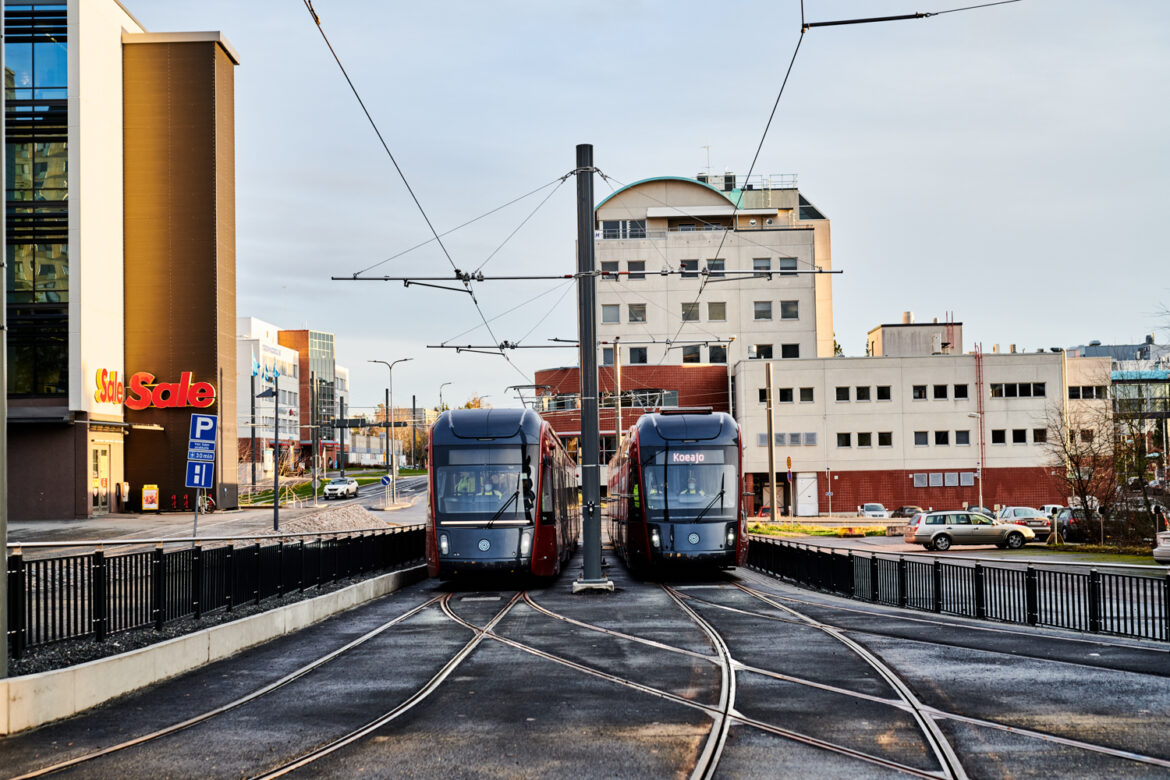
The progress and effects of the construction work has been communicated openly and proactively. Public events, themed workshops, social media and worksite visits, among other things, have been used to inspire active dialogue.
A total cost estimate, consisting of the objective cost that is binding to all the parties of the Alliance, as well as the client’s procurements, the client’s risk reserve and the bonus pool, has been specified for section 1 of the Tramway Alliance. The cost of section 2 has been specified for the route through the water fill area Näsisaari and Hiedanranta area.
The total cost estimate for the construction of the infrastructure and the depot of the tramway on phase 1 is EUR 238.8 million and the share of section 2 is EUR 84,9 million.
The city will be in charge of operating the tramway, and the line 1 and 3 have been accommodated as a part of the public transportation system of Tampere. The bus lines have been coordinated with the tram lines. The tramway traffic from the city centre to Hervanta and from Tampere University Hospital to Hatanpää route started in August 2021.